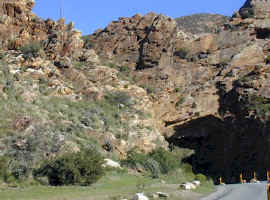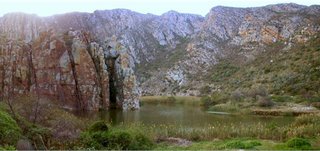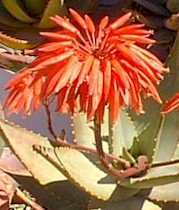 This excursion into the small Karoo is once more into the drier parts of the country to see some succulents. We were heading for Montagu.
This excursion into the small Karoo is once more into the drier parts of the country to see some succulents. We were heading for Montagu.The Klein Karoo will make the heart skip a beat of any person who loves succulent plants.
Kogmanspass is just a short tunnel through the mountain. Remarkable as it was built by hand 1876 - 1878
Geological history Kogmanskloof passes through folded layers of the table mountain sandstone in the Langeberge mountains. Rivers deposited the sediment of which these rock were formed along a coastline some 400 to 450 million years ago. Then about 280 million years ago compression forces in the earth's crust began folding the beds for the next 60 million years. Upon this followed forces which formed large crustal fractures roughly parallel to the present coastline. One of the largest of these, the Worcester Fault passes near the southern entrance to the kloof and displaced beds to the south of it downward by several kilometers. Kogmanskloof is but one of several deep gorges carved through the tough sandstone of the table mountain sandstone by the erosive action of swift flowing rivers for millions of years.

The view immediately out of the tunnel into the Kogmanskloof gorge.
It was a lovely winter day. This very hot region is greener in winter than in summer. As on most of our winter trips, the misty weather was not very good for photos but very much better than the summer heat for walking and climbing.

Rudi loves the climbing. As geologist he is used to climb over rocks just to see what is on the other side of the rock.
photo below:-
The aloes on the slopes are Aloe comptonii.

The very short capitated racemes of Aloe comptonii The leaves are broad and short with blunt teeth.


1 comment:
Very nice photos!
Post a Comment